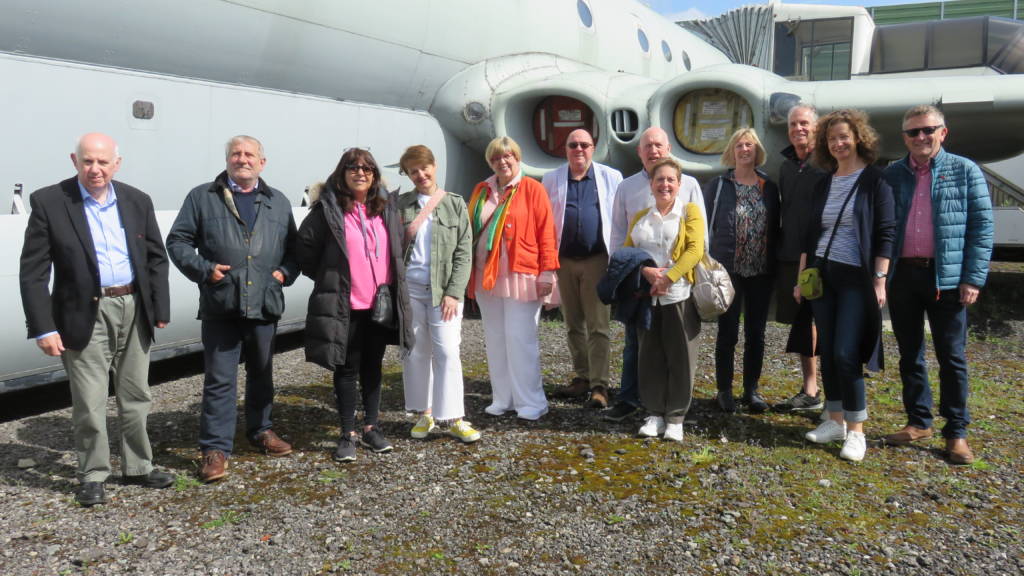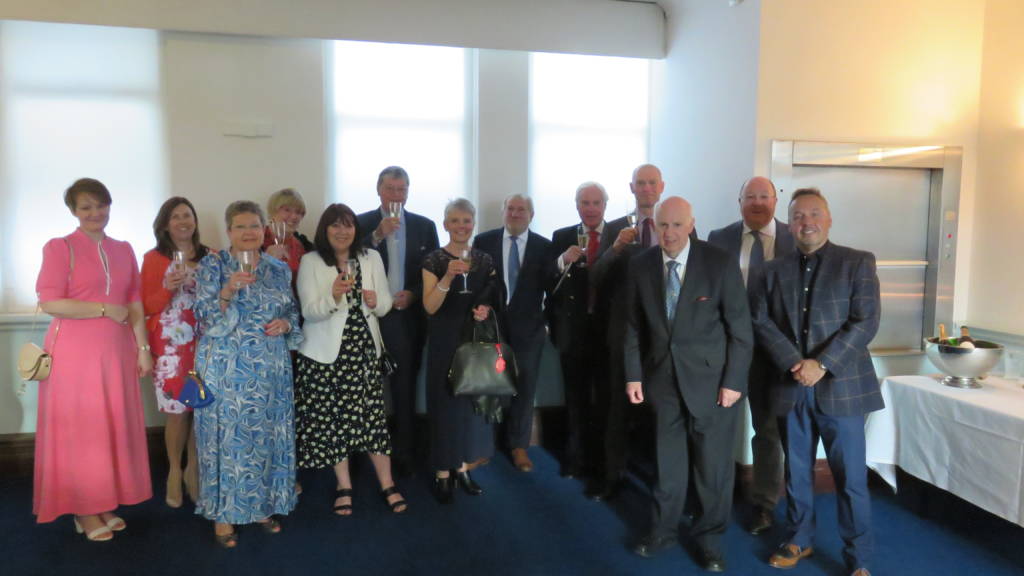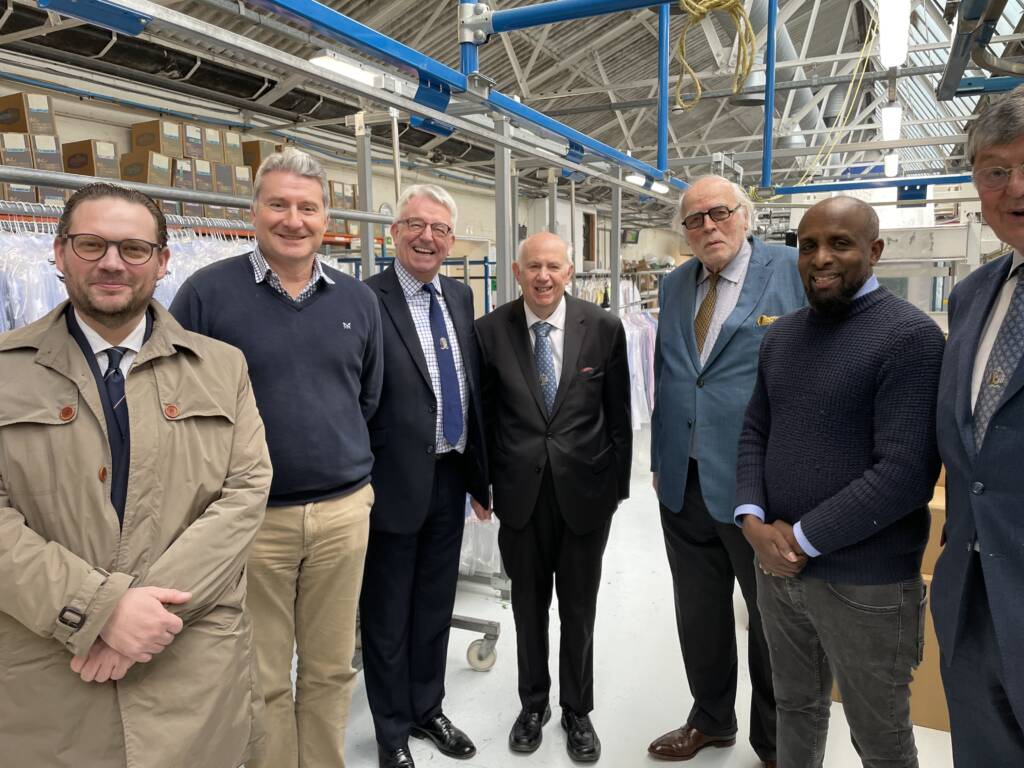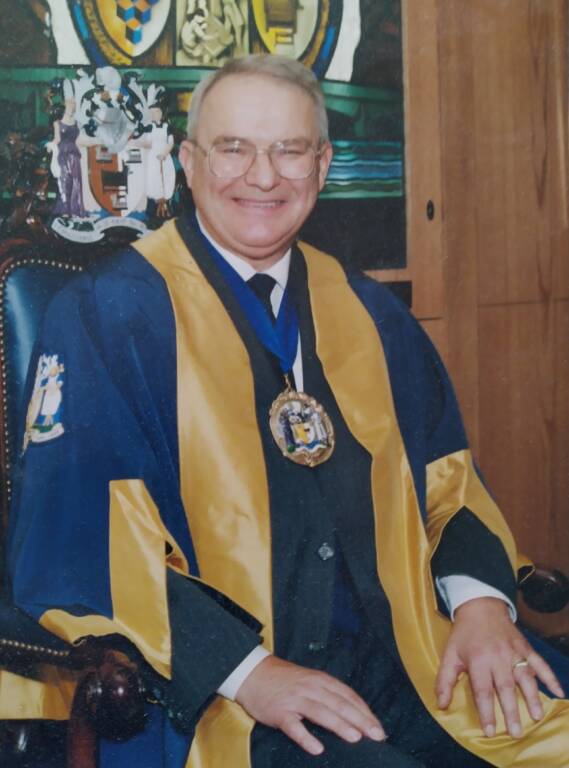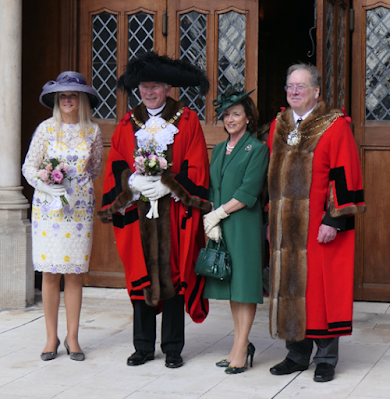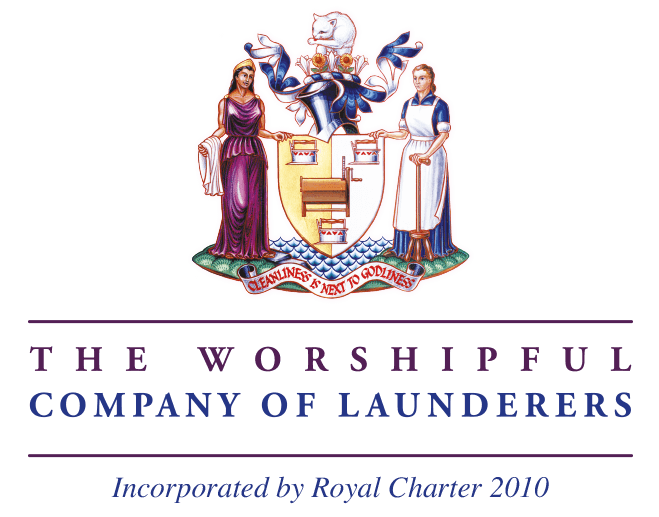This year’s Livery W/E was held in Manchester, organised and hosted by Master, Ken Cupitt.
Located in the heart of Manchester, the Midland Hotel is steeped in fascinating social and architectural history. It was opened in 1903 by the Midland Railway Company, initially constructed to serve rail travellers from London hence a fitting choice of location for visiting members of a London Livery Company invited by Master to his home area.
Since its opening, the Midland Hotel has welcomed many guests, also playing host to exciting meetings which have shaped British history including Charles Rolls and Henry Royce leading to the formation of Rolls-Royce in 1904. Sir Winston Churchill was a regular guest of the hotel and in November 1959, the Queen Mother dined at The Midland’s Trafford Restaurant after attending a Royal Variety Performance at the local Royal Theatre. The Beatles were famously refused access to the Midland’s French restaurant after being told they were inappropriately dressed. Thankfully, this did not happen to the Launderers and guests, over the weekend of 6th – 8th May 2022 when the group of 24 visited and stayed to relax and enjoy a full programme of events.
The week-end commenced with dinner on the Friday evening in the Rolls suite of the Hotel. At 08.25am on Saturday morning a coach was on its way to Manchester’s Runway Visitor Park for the group to have an exclusive visit to the iconic Concorde, a supersonic passenger-carrying commercial airplane, and the first major co-operative venture by Britain and France to design and build an aircraft. The result was a technological masterpiece, the delta-wing Concorde, which made its maiden flight on March 2, 1969. The Concorde had a maximum cruising speed of 2,179 km (1,354 miles) per hour, or Mach 2.04 (more than twice the speed of sound), allowing the aircraft to reduce the flight time between London and New York to about three hours. The aircraft expanded 50cm during supersonic flight.
For this visit the aircraft stayed safely on the ground whilst the group listened to the experts describing the complexities of building and flying this revolutionary airplane, which was never matched by rivals from Russia or America. In one of the images you will see PM Selwyn Burchhardt, a pilot himself, trying his hand at the controls in the pilot’s position of the flight deck, ably supervised by the trainer of course.
The group then went on to see the military reconnaissance aircraft, Nimrod, which was assembled within Greater Manchester. BAE Systems’ Nimrod MRA4 is a retired maritime patrol and attack aircraft, installed with the efficient Rolls-Royce BR700 turbofan jet engine, which gave almost double flight range of the earlier Nimrod MR2. The MRA4 was ultimately cancelled in 2010 as a result of the Strategic Defence and Security Review.
Another of the images is of some of the group seated in the crew’s seats of the Nimrod. The Nimrod during operations, could fly at low altitudes very slowly but packed an aggressive punch when required.
With the morning session over, the coach ferried the group over to Style Village to the site of Quarry Bank Mill and Gardens, now owned and run by the National Trust. The Mill is still a working cotton mill but with an interesting history featured in several TV programmes, including a two series drama on Channel four, The Mill.
First opened in 1784 by a young man from Belfast, Samuel Greg, who had moved to Manchester, turning a peaceful river valley into an industrial empire at Quarry Bank Mill. The group explored the world of the Industrial Revolution where hundreds of people once lived and worked amongst the buildings, its gardens and woods.
Quarry Bank Mill, established by Samuel Greg, was notable for innovations both in machinery and in his approach to labour relations. The latter, largely as a result of the work of Greg’s wife, Hannah Lightbody. The family took a paternalistic attitude toward the workers, providing medical care for all and limited education to the children. The Quarry Bank Mill has on display an extra-large working water wheel which still powers the mill. It also displays two steam boilers, one a low and one a high-pressure system, it also displays a water driven turbine that produced 200 HP when installed in 1904, which proved sufficient to displace the water wheel and the steam boilers at that time
The mill still spins and weaves cotton but now more for demonstration and education than for commerce. Over the course of the afternoon, the visiting group had experience of the Mill and the gardens and a tour of Quarry Bank House, the Greg family home.
The history of power at Quarry Bank encompasses the harnessing of the River Bollin, a series of steam engines, a leap of faith in water turbines and, above all, the hard work of skilled labourers. The mill itself was moulded to suit each new development, and as the reins passed along the different generations of Greg family, each had to decide whether to move in time with the technological innovations of their contemporaries, or to tread carefully and cautiously. The first of these was Samuel Greg, born in Belfast in 1758 and sent to England as a young boy to live with his uncle, linen manufacturer Robert Hyde, from whom he would learn the secrets of the cotton trade.
By 1791 entrepreneurial Samuel Greg who had learned from being a purchasing agent for his cotton trading uncles, Robert and Nathaniel Hyde, and saw an opportunity because he had built up contacts, the American War of Independence had come to an end, which re-opened trade opportunities, and the patent for the water frame, created by Richard Arkwright in 1769 had expired, allowing for the design to be freely used. With an inheritance from Robert Hyde, he sought a patch of land near to water which could supply his new cotton warp spinning business.
Steam power, at that time, was at an experimental stage and was not yet a reliable source for powering a mill, although engineers such as Thomas Newcomen and James Watt had been developing steam powered engines, Samuel Greg went in search of a power source he could trust. Even as steam became more common, engines were incapable of generating as much power as the latest water wheel designs and they certainly couldn’t claim to be as cheap, efficient, or effective.
The following century would see rises and falls in production and profits and the Greg family would then have to decide when and how to keep up with increased demand and competing markets. Should they keep faith in established water power, or they take the risk experimenting with the latest technologies.
The gardens, established by the Greg family, surrounding Quarry Bank Mill and the River Bollin are stunning and Spring is the right time to be walking along the miles of paths and climbing the steps.
On the Saturday evening the group dined at the nearby St James’s Club, a fine stone-faced building on Spring Gardens with splendid views down King Street, a private members’ club famous for the many business deals concluded within its walls.
This City Centre Club was established in 1825 and the Worshipful Company of Launderers enjoyed an evening of amenable company with a fine wine and a good meal in an unhurried environment.
A fine and fitting ending to a splendid weekend.

